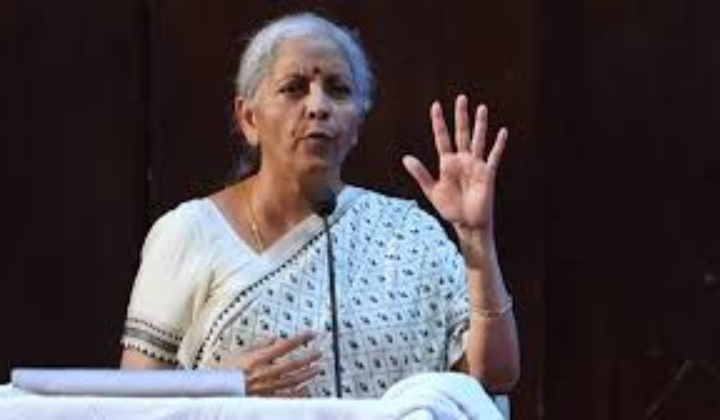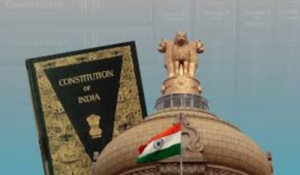Bank mergers in India between 1993 and 2025 have played a major role in shaping the country’s modern banking landscape, strengthening financial stability and improving operational efficiency. Over the years, several public and private sector banks have been merged to create larger, more resilient institutions capable of supporting India’s growing economy. These mergers were driven by regulatory reforms, technological needs, and the aim to create stronger balance sheets.
Bank Mergers in India (1993–2025): Full List
Here’s a complete look at the most significant mergers during this period:
| Year | Acquiring Bank | Merged Bank(s) | Type |
|---|---|---|---|
| 1993 | Punjab National Bank | New Bank of India | Public Sector |
| 2008 | HDFC Bank | Centurion Bank of Punjab | Private Sector |
| 2010 | ICICI Bank | Bank of Rajasthan | Private Sector |
| 2017 | State Bank of India | 5 Associate Banks + Bharatiya Mahila Bank | Public Sector |
| 2019 | Bank of Baroda | Vijaya Bank & Dena Bank | Public Sector |
| 2020 | Punjab National Bank | Oriental Bank of Commerce & United Bank of India | Public Sector |
| 2020 | Canara Bank | Syndicate Bank | Public Sector |
| 2020 | Union Bank of India | Andhra Bank & Corporation Bank | Public Sector |
| 2020 | Indian Bank | Allahabad Bank | Public Sector |
| 2020 | Yes Bank | Restructured by RBI-led Consortium (SBI + others) | Private Sector |
| 2022 | HDFC Bank | HDFC Ltd | Private Sector |
| 2025 | Yes Bank | SMBC (Japan) acquired major stake | Private Sector/Foreign Investment |
History of Bank Mergers in India (1993–2025)
1. SBI and Its Associate Banks (2017)
The biggest merger in Indian banking history SBI combined with its five associate banks and Bharatiya Mahila Bank. This move made SBI one of the top 50 global banks and improved operational strength, though the integration took time due to massive employee and system realignment.
2. Bank of Baroda, Dena Bank & Vijaya Bank (2019)
This merger was India’s first-ever three-way amalgamation in the public sector. It created India’s second-largest PSB with a wider customer base, but required significant backend alignment.
3. 2020 PSB Merger Wave
Four large mergers reshaped the public banking map:
- PNB became the second-largest PSB after merging OBC & United Bank.
- Canara Bank merged with Syndicate Bank.
- Union Bank merged with Andhra & Corporation Bank.
- Indian Bank merged with Allahabad Bank.
These steps reduced the number of PSBs from 27 to 12, making them more efficient and competitive.
4. HDFC Ltd + HDFC Bank (2022)
This was a landmark private sector merger, combining housing finance and banking. It created a financial powerhouse with deep reach in both retail and corporate segments, setting a new benchmark for scale and innovation.
5. Yes Bank Rescue (2020–2025)
After facing a liquidity crisis, Yes Bank was revived by the RBI and a group of investors led by SBI. Later, Japan’s SMBC Group acquired a major stake in 2025, signaling growing global interest in Indian banking.
Why Did These Mergers Happen?
-
To Create Stronger Banks: Many public sector banks were struggling with rising NPAs (bad loans). The government merged smaller PSBs into larger ones to strengthen their financial position.
-
To Improve Efficiency: Mergers helped banks reduce duplication of services, save operational costs, and expand their reach under a unified system.
-
To Handle Financial Stress: In cases like Yes Bank (2020), mergers and restructuring were necessary to protect depositors and prevent a banking crisis.
-
To Compete Globally: Mergers like HDFC Ltd + HDFC Bank aimed to create larger entities capable of competing with global financial giants and supporting large-scale credit growth.
-
Digital & Technological Integration: Combining systems helped banks adopt modern banking technologies faster, enhancing customer experience and data management.
Indian Public Sector Bank Merger
Indian Public Sector Banks (PSBs) have gone through many mergers in the last few years. These mergers happened mainly to make the banks stronger, reduce losses, and help the banking system work better. Some of the major Public Sector Bank mergers are:
- In 2017, State Bank of India merged with its five associate banks (like State Bank of Patiala, State Bank of Mysore, etc.) and Bharatiya Mahila Bank. This made SBI one of the biggest banks in the world.
- In 2019, Bank of Baroda merged with Dena Bank and Vijaya Bank. This was the first three-way merger in India.
- In 2020, several big mergers happened:
-
- Punjab National Bank merged with Oriental Bank of Commerce and United Bank of India.
- Canara Bank merged with Syndicate Bank.
- Union Bank of India merged with Andhra Bank and Corporation Bank.
- Indian Bank merged with Allahabad Bank.
Note: After these mergers, the number of public sector banks in India has reduced. Now, the remaining banks are larger and can serve more customers. These changes also help the banks handle bad loans (NPAs) better and compete with private banks and international banks.
Impact of Bank Mergers on the Indian Banking Sector
Bank mergers have strengthened the Indian banking sector by improving capital adequacy, operational efficiency, and digital reach. However, they also brought integration challenges and reduced competition among public sector banks.
Positive Impacts
- Larger and stronger balance sheets for funding infrastructure and large projects.
- Improved capital adequacy and efficiency due to reduced duplication.
- Wider customer base and digital reach across urban and rural India.
- Better risk management and governance after consolidation.
Challenges
- Integration of employees and systems often caused short-term disruptions.
- Cultural differences between banks affected productivity initially.
- Reduced number of PSBs also meant less competition in the sector.
Why Banking Aspirants Must Understand Bank Merger Trends
Bank mergers are a crucial part of India’s evolving financial landscape, and for banking aspirants, understanding these trends offers a clear advantage in exams and interviews. They not only strengthen conceptual clarity but also highlight an aspirant’s awareness of banking reforms and structural changes.
Why It Matters for Aspirants
- Helps score better in Banking Awareness, GA, and Current Affairs sections.
- Frequently asked in interviews, GD rounds, and descriptive writing.
- Builds strong understanding of RBI policies, financial stability measures, and governance reforms.
- Enhances knowledge of how banks operate post-merger hierarchy, operations, and customer services.
- Shows examiners that the aspirant understands industry-wide changes and not just textbook concepts.
- Helps analyze trends in vacancies, recruitment patterns, and organizational restructuring.
Key Drivers Behind Public Sector Bank Mergers
Public sector bank mergers in India have been driven by multiple critical factors:
- High Non-Performing Assets (NPAs): Many PSBs struggled with rising bad loans, weakening their capital base and profitability.
- Strengthening Financial Health: Mergers helped create larger banks with stronger balance sheets and better capital adequacy.
- Improving Operational Efficiency: Consolidation reduced service duplication, lowered operational costs, and streamlined banking processes.
- Economic Reforms and Global Competitiveness: Following financial sector reforms, fewer but stronger banks were needed to support India’s growing economy and compete internationally.
- Rescue and Stability: Some mergers, such as Yes Bank’s restructuring, were aimed at protecting depositors and maintaining financial system stability.
- Technological Integration: Mergers facilitated unified IT and digital banking platforms, accelerating modernization.
Impact on Customers and Banking Services
Mergers have significantly influenced customer experience and service delivery:
- Expanded Branch and ATM Networks: Customers gained wider access to banking facilities across regions.
- Improved Lending Capacity: Stronger merged banks could offer larger and more diverse credit facilities.
- Digital Banking Growth: Combined resources enabled accelerated adoption of digital channels, mobile banking, and online services.
- Product Innovation: Larger banks developed new financial products and services tailored to urban and rural needs.
- Short-Term Disruptions: Initial system integration sometimes caused temporary inconveniences such as service delays.




 Government Appoints New Executive Direct...
Government Appoints New Executive Direct...
 Bank of America India Gets New CEO, RBI ...
Bank of America India Gets New CEO, RBI ...
 Most important topic for IBPS RRB Clerk ...
Most important topic for IBPS RRB Clerk ...







